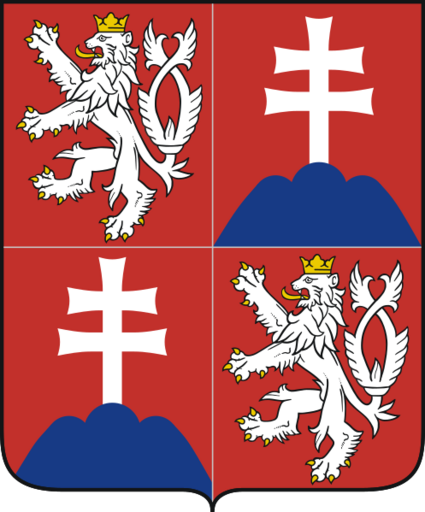
The social process of disintegration of the Czechoslovak state between 1990 and 1992. It led to the creation of the independent Czech Republic and to a new form of liberal Czech statehood. The dissolution of Czechoslovakia is the most significant change in state formation since 1945.
As an artificial state created as a result of the Treaty of Versailles (1918), former Czechoslovakia repeatedly faced problems of national instability. In spite of the officially proclaimed brotherhood of Czechs and Slovaks, the fact could not be hidden that the economic structure and most of all the religious and cultural identities of the two nations were based on different assumptions, due which the political project of the so-called Czechoslovakism suffered from systematic crises almost the entire 20th century. The largest crisis was the declaration of independent Slovak state in 1939. Even after the restoration of Czechoslovakia in 1945, the national question had not been solved. The law on the federalisation of state came into force as late as 1 January 1969 and was intended to satisfy the need for greater political and cultural autonomy of Slovaks. Although a Slovak, Gustáv Husák, became president in 1975, the problem of Prague-centric organisation, i.e. the centralisation of public offices in the capital city, remained unsolved.
Soon after the Velvet Revolution in 1989, the question of the cohabitation of the two nations was raised. The crisis and the dissolution of Czechoslovakia was preceded by the so-called Hyphen War, in which the stumbling block was the question whether the name of the state Czechoslovakia should have a hyphen as a symbol of Slovak autonomy. In April 1990, the name Czech and Slovak Federative Republic was approved as the official name of the post-communist state organisation. In 1992, the Ministry of International Relations was formed to solve the disputes, but in spite of this, most of the newly-founded Slovak political parties were in favour of the dissolution of the state and the formation of independent Slovakia. The option of establishing a confederation proved to be problematic and the Czech ruling party ODS had the pragmatic goal of peaceful dissolution. Czech Prime Minister Václav Klaus and Slovak Prime Minister Vladimír Mečiar met on 8 July 1992 in the Tugendhat Villa in Brno, where they decided to dissolve the state. The independent Czech Republic was founded on 1 January 1993. The dissolution of Czechoslovakia happened without any armed conflicts, although it is still regarded as controversial because no referendum was ever organised.
The largest internal political crisis of Czechoslovakia after 1989. The conflict over the status, competences and level of national autonomy of Czechs and Slovaks was eventually resoled by the decision to split the two federative republics. The decision was reached on 8 July 1992 by Václav Klaus and Vladimír Mečiar as prime ministers of the two countries, providing the basis for the formation of two entirely independent republics. The dissolution of Czechoslovakia is an example of a peaceful solution to ethnic disagreements, although it was carried out without a referendum, due to which it is still regarded as controversial.
2016-2020 ABCzech.cz - © Filozofická fakulta Univerzity Karlovy
Content from this website may be used without permission only for personal and non-commercial purposes and with the source cited. Any other use is allowed only with the authors' consent.
This web application Sonic.cgi meets GDPR requirements. Current information can be found here.